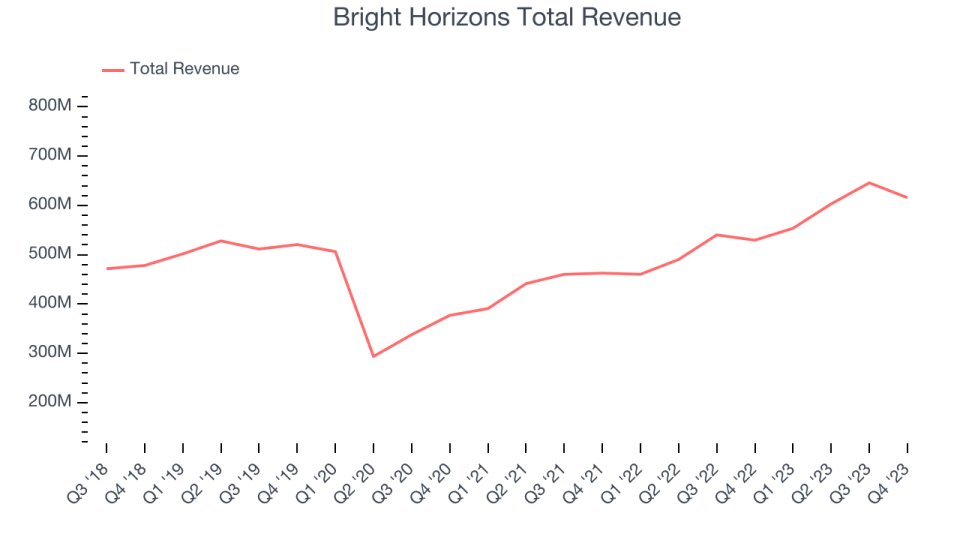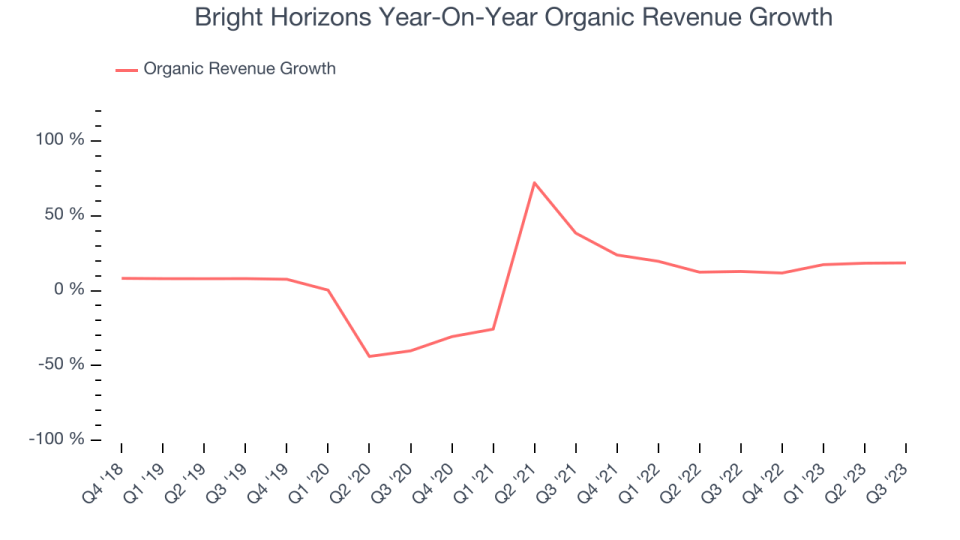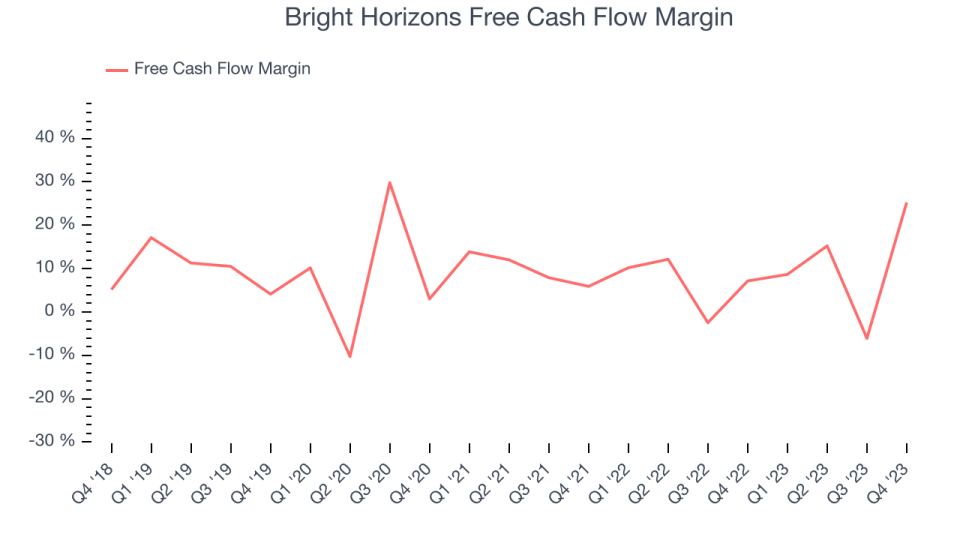Bright Horizons (NYSE:BFAM) Posts Better-Than-Expected Sales In Q4, Guides For Strong Full-Year Sales

Child care and education company Bright Horizons (NYSE:BFAM) reported Q4 FY2023 results topping analysts' expectations , with revenue up 16.3% year on year to $615.6 million. The company's full-year revenue guidance of $2.65 billion at the midpoint also came in 2.2% above analysts' estimates. It made a non-GAAP profit of $0.83 per share, improving from its profit of $0.77 per share in the same quarter last year.
Is now the time to buy Bright Horizons? Find out by accessing our full research report, it's free.
Bright Horizons (BFAM) Q4 FY2023 Highlights:
Revenue: $615.6 million vs analyst estimates of $591.7 million (4.1% beat)
EPS (non-GAAP): $0.83 vs analyst estimates of $0.74 (12.5% beat)
Management's revenue guidance for the upcoming financial year 2024 is $2.65 billion at the midpoint, beating analyst estimates by 2.2% and implying 9.6% growth (vs 19.8% in FY2023)
Free Cash Flow of $155.4 million is up from -$39.18 million in the previous quarter
Gross Margin (GAAP): 18.8%, down from 20.8% in the same quarter last year
Market Capitalization: $5.76 billion
“I am pleased to report solid financial results for the fourth quarter of 2023,” said Stephen Kramer, Chief Executive Officer.
Founded in 1986, Bright Horizons (NYSE:BFAM) is a global provider of child care, early education, and workforce support solutions.
Education Services
A whole industry has emerged to address the problem of rising education costs, offering consumers alternatives to traditional education paths such as four-year colleges. These alternative paths, which may include online courses or flexible schedules, make education more accessible to those with work or child-rearing obligations. However, some have run into issues around the value of the degrees and certifications they provide and whether customers are getting a good deal. Those who don’t prove their value could struggle to retain students, or even worse, invite the heavy hand of regulation.
Sales Growth
Reviewing a company's long-term performance can reveal insights into its business quality. Any business can have short-term success, but a top-tier one sustains growth for years. Bright Horizons's annualized revenue growth rate of 4.9% over the last five years was weak for a consumer discretionary business.

Within consumer discretionary, product cycles are short and revenue can be hit-driven due to rapidly changing trends. That's why we also follow short-term performance. Bright Horizons's annualized revenue growth of 17.4% over the last two years is above its five-year trend, suggesting some bright spots.
We can better understand the company's revenue dynamics by analyzing its organic sales, which strip out currency fluctuations and one-time events like acquisitions. Over the last two years, Bright Horizons's organic sales averaged 15.8% year-on-year growth. Because this number is lower than its revenue growth during the same period, we can see that non-fundamental factors aided its top-line performance.

This quarter, Bright Horizons reported robust year-on-year revenue growth of 16.3%, and its $615.6 million of revenue exceeded Wall Street's estimates by 4.1%. Looking ahead, Wall Street expects sales to grow 8% over the next 12 months, a deceleration from this quarter.
Unless you’ve been living under a rock, it should be obvious by now that generative AI is going to have a huge impact on how large corporations do business. While Nvidia and AMD are trading close to all-time highs, we prefer a lesser-known (but still profitable) semiconductor stock benefitting from the rise of AI. Click here to access our free report on our favorite semiconductor growth story.
Cash Is King
If you've followed StockStory for a while, you know we emphasize free cash flow. Why, you ask? We believe that in the end, cash is king, and you can't use accounting profits to pay the bills.
Over the last two years, Bright Horizons has shown mediocre cash profitability, putting it in a pinch as it gives the company limited opportunities to reinvest, pay down debt, or return capital to shareholders. Its free cash flow margin has averaged 8.8%, subpar for a consumer discretionary business.

Bright Horizons's free cash flow came in at $155.4 million in Q4, equivalent to a 25.2% margin and up 310% year on year. Over the next year, analysts predict Bright Horizons's cash profitability will fall. Their consensus estimates imply its LTM free cash flow margin of 10.6% will decrease to 7.8%.
Key Takeaways from Bright Horizons's Q4 Results
It was great to see Bright Horizons's positive full-year sales outlook, which exceeded analysts' expectations. We were also excited its revenue outperformed Wall Street's estimates. On the other hand, its operating margin missed. Zooming out, we think this was still a decent, albeit mixed, quarter, showing that the company is staying on track. The stock is up 1.2% after reporting and currently trades at $97.01 per share.
So should you invest in Bright Horizons right now? When making that decision, it's important to consider its valuation, business qualities, as well as what has happened in the latest quarter. We cover that in our actionable full research report which you can read here, it's free.
